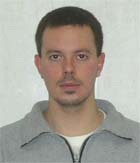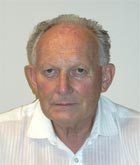Contents: 2024 | 2023 | 2022 | 2021 | 2020 | 2019 | 2018 | 2017 | 2016 | 2015 | 2014 | 2013 | 2012 | 2011 | 2010 | 2009 | 2008 | 2007 | 2006 | 2005 | 2004 | 2003 | 2002 | 2001
2005, 1
Differences in dummy-head HRTFs caused by the acoustical environment near the head
language: English
received 27.12.2004, published 21.01.2005
Download article (PDF, 270 kb, ZIP), use browser command "Save Target As..."
To read this document you need Adobe Acrobat © Reader software, which is simple to use and available at no cost. Use version 4.0 or higher. You can download software from Adobe site (http://www.adobe.com/).
ABSTRACT
Filtering of the Head-Related Transfer Functions (HRTFs) is the first and most important part during the perception of directional information in spatial hearing. A computer-controlled dummy-head measurement system was installed in an anechoic room with 1 degree horizontal and 5 degrees vertical resolution. Differences in the measured HRTFs caused by changes of the acoustical environment near the head are calculated. Effects of “everyday objects” like caps, hair, glasses and clothing on the fine structure of the HRTFs are presented.
15 pages, 6 figures
Сitation: György Wersényi, András Illényi. Differences in dummy-head HRTFs caused by the acoustical environment near the head. Electronic Journal “Technical Acoustics”, http://www.ejta.org, 2005, 1.
REFERENCES
[1] J. Blauert. Spatial Hearing. The MIT Press, MA, 1983.
[2] E. A. G. Shaw. Transformation of sound pressure level from the free-field to the eardrum in the horizontal plane. J. Acoust. Soc. Am. 1974, 56, 1848–1861.
[3] S. Mehrgart, V. Mellert. Transformation characteristics of the external human ear. J. Acoust. Soc. Am. 1977, 61, 1567–1576.
[4] D. Hammershøi, H. Møller. Free-field sound transmission to the external ear; a model and some measurement. Fortschritte der Akustik DAGA-91, Teil A, Bochum, 1991, 473–476.
[5] C. B. Jensen, M. F. Sorensen, D. Hammershøi, H. Møller. Head-Related Transfer Functions: Measurements on 40 human subjects. Proceedings 6-th Int. FASE Conference, Zürich, 1992, 225–228.
[6] W. M. Hartmann. How we localize sound. Physics Today November, 1999, 24–29.
[7] D. J. Kistler, F. L. Wightman. Principal Component Analysis of Head-Related Transfer Functions. J. Acoust. Soc. Am. 1990, 88, 98.
[8] F. L. Wightman, D. J. Kistler. Headphone Simulation of Free-Field Listening I.-II. J. Acoust. Soc. Am. 1989, 85, 858–878.
[9] H. Møller, M. F. Sorensen, D. Hammershøi, C. B. Jensen. Head-Related Transfer Functions of human subjects. J. of the AES, 1995, 43, 300–321.
[10] D. Hammershøi, H. Møller. Sound transmission to and within the human ear canal. J. Acoust. Soc. Am. 1996, 100, 408–427.
[11] H. Møller, M. F. Sorensen, C. B. Jensen, D. Hammershøi. Binaural Technique: Do We Need Individual Recordings? J. of the AES, 1996, 44, 451–469.
[12] P. Maijala. Better binaural recordings using the real human head. Proceedings Inter-Noise 97, Budapest, Hungary, 1997, 1135–1138.
[13] H. Møller. On the quality of artificial head recording systems. Proceedings Inter-Noise 97, Budapest, Hungary, 1997, 1139–1142.
[14] H. Møller, D. Hammershøi, C. B. Jensen, M. F. Sorensen. Evaluation of artificial heads in listening tests. J. Acoust. Soc. Am. 1999,47, 83–100.
[15] E. M. Wenzel, M. Arruda, D. J. Kistler, F. L. Wightman. Localization using nonindividualized head-related transfer functions. J. Acoust. Soc. Am. 1993, 94,
111–123.
[16] J. C. Middlebrooks. Individual differences in external-ear transfer functions reduced by scaling in frequency. J. Acoust. Soc. Am. 1999, 106, 1480–1491.
[17] J. C. Middlebrooks. Virtual localisation improved by scaling nonindividualized external-ear transfer function in frequency. J. Acoust. Soc. Am. 1999, 106, 1493–1510.
[18] E. M. Wenzel, S. H. Foster. Perceptual consequences of interpolating head-related transfer functions during spatial synthesis. Proceedings of the ASSP Workshop on Applications of Signal Processing to Audio and Acoustics, New York, USA, 1993.
[19] H. Møller. Fundamentals of binaural technology. Applied Acoustics, 1992, 36, 171–218.
[20] P. Minnaar, S. K. Olesen, F. Christensen, H. Møller. Localization with Binaural Recordings from Artificial and Human Heads. J. Audio Eng. Soc. 2001, 49, 323–336.
[21] J. Blauert. Psychoakustik des binauralen Hörens. DAGA’84, Darmstadt, invited plenary paper, 117–128, 1984.
[22] J. C. Middlebrooks. Spectral Shape Cues for Sound Localization. Binaural and Spatial Hearing in Real and Virtual Environments, Lawrence Erlbaum Ass., Mahwah, New Jersey, 1997, 77–97.
[23] J. C. Middlebrooks, D. M. Green. Sound localization by human listeners. Ann. Rev. Psychol. 1991, 42, 135–159.
[24] M. Bodden, G. Canavet, J. Grabke, K. Hartung, T. Takahashi. Räumliches Hören in komplexen akustischen Umgebungen. Proceedings of DAGA-94, Bochum, 1994,
1137–1140.
[25] Gy. Wersényi. HRTFs in Human Localization: Measurement, Spectral Evaluation and Practical Use in Virtual Audio Environment. PhD Thesis, BTU Cottbus, Germany, 2002.
[26] Gy. Wersényi. Localization in a HRTF-based Minimum Audible Angle Listening Test on a 2D Sound Screen for GUIB Applications. AES Convention Preprint Paper, Nr.5902, Presented at the 115-th Convention, New York, New York, 2003 October,
10–13.
[27] J. Kawaura, Y. Suzuki, F. Asano, T. Sone. Sound localization in headphone reproduction by simulating transfer functions from the sound source to the external ear. J. Acoust. Soc. Japan, 1991, 12, 203–215.
[28] P. Damaske, B. Wagener. Richtungshörversuche über einen nachgebildeten Kopf. Acoustica, 1969, 21, 30–35.
[29] C. Jin, M. Schenkel, S. Carlile. Neural system identification model of human sound localization. J. Acoust. Soc. Am. 2000, 108(3), 1215–1235.
[30] N. Cheung, S. Trautman, A. Horner. Head-Related Transfer Function Modeling in 3-D Sound Systems with Genetic Algorithms. J. Audio Eng. Soc. 1998, 46(6), 531–539.
[31] D. R. Begault, E. Wenzel, M. Anderson. Direct Comparison of the Impact of Head Tracking, Reverberation and Individualized Head-Related Transfer Functions on the Spatial Perception of a Virtual Speech Source. J. of the AES, 2001, 49(10), 904–917.
[32] P. Berényi, A. Illényi. What does it mean for an HRTF not to have the minimal phase property? Proceedings of Inter-Noise 96, Liverpool, England, 1996, 2127–2130.
[33] D. J. Kistler, F. L. Wightman. A model of head-related transfer functions based on principal components analysis and minimum-phase reconstruction. J. Acoust. Soc. Am. 1991, 91, 1637–1647.
[34] Gy. Wersényi. Measurement system upgrading for more precise measuring of the Head-Related Transfer Functions. Proceedings of Inter-Noise 2000, Nice, France, 2000,
1173–1176.
[35] A. Illényi, Gy. Wersényi. Discrepancy in binaural tests and in measurements of sound field parameters. Proceedings of the International Békésy Centenary Conference on hearing and related sciences, Budapest, Hungary, 1999, 160–165.
[36] Gy. Wersényi, A. Illényi. Test Signal Generation and Accuracy of Turntable Control in a Dummy-Head Measurement System. J. of the AES, 2003, 51(3), 150–155.
[37] Gy. Wersényi, P. Tatai. Detection of reflections in free-field directional hearing by waveform analysis of accurate dummy-head HRTFs. Proceedings of IEEE Instrumentation and Measurement Technology Conference, Budapest, Hungary, 2001, 606–609.
[38] K. A. J. Riederer. Computational quality assessment of HRTFs, EUSIPCO(X) – European Signal Processing Conference, Tampere, Finland, 2000.
[39] C. I. Cheng, G. H. Wakefield. Introduction to Head-Related Transfer Functions (HRTFs): Representations of HRTFs in Time, Frequency, and Space. J. of the AES, 2001, 49, 231–249.
[40] K. Genuit. Untersuchungen zur Bedeutung von einzelnen Strukturen der Außenohrübertagungs-funktion und das räumliche Hören. DAGA’86, Oldenburg, 1986, 485–488.
[41] K. Genuit. Eine systemtheoretische Beschreibung des Außenohres. DAGA’85, Stuttgart, 1985, 459–462.
[42] K. Genuit. Ein kalibrierfähiges Kunstkopf Mess-System. DAGA’84, Darmstadt, 1984, 279–282.
[43] H. Farag, J. Blauert, O. A. Alim. Psychoacoustic Investigations on Sound-Source Occlusion. Journal of the AES, 2003, 51(7/8), 635–645.
[44] E. A. G. Shaw. The external ear. Handbook of Sensory Physiology 1, Auditory System, Anatomy Physiology Ear. Springer, New York, 1974.
[45] D. S. Brungart, W. M. Rabinowitz. Auditory localization of nearby sources. Head-related transfer functions. J. Acoust. Soc. Am. 1999, 106(3), 1465–1479.
[46] M. B. Gardner, R. S. Gardner. Problem of localization in the median plane: effect of pinnae cavity occlusion. J. Acoust. Soc. Am. 1973, 53, 400–408.
[47] B. G. Shinn-Cunningham, S. Santarelli, N. Kopco. Tori of confusion: Binaural localisation cues for sources within reach of a listener. J. Acoust. Soc. Am. 2000, 107(3), 1627–1636.
[48] G. F. Kuhn. Model for the interaural time differences in the azimuthal plane. J. Acoust. Soc. Am. 1977, 62, 157–167.
[49] V. R. Algazi, C. Avendano, R. O. Duda. Elevation localization and head-related transfer function analysis at low frequencies. J. Acoust. Soc. Am. 2001, 109, 1100–1122.
[50] T. Tarnóczy. Über den Verstärkerungs-Verminderungs-Effekt der Ohrmuschel und des Kopfes. Proceedings 6th Int. FASE Conference, Zürich, 1992, 229–232.
[51] K. Genuit, H. J. Platte. Untersuchungen zur Realisation einer richtungsgetreuen Übertragung mit elektroakustischen Mitteln. Proceedings of DAGA-81, Berlin, 1981, 629–632.
 |
György Wersényi was born in Gyor, Hungary, in 1975. He received a M.Sc. degree in electrical engineering from the Technical University of Budapest in 1998. He spent another four years as a full-time Ph.D. student there in the “Békésy György” Acoustic Research Laboratory. After spending the academic year 2000-2001 with research scholarship at the Brandenburg Technical University in Cottbus, Germany, he received a Ph.D. degree in 2002 from the BTU Cottbus. e-mail: wersenyi(at)sze.hu http://uni.sze.hu/ |
|
 |
András Illényi was born in 1932 in Budapest, Hungary. He graduated at the Faculty of Physics and Mathematics of Loránd Eötvös University of Natural Sciences in Budapest, in the year 1956. His activity is related to many fields of acoustic sciences and technical applications. The most important fields of interest are directional and binaural hearing, noise and vibration control, practical applications. He has more than 80 publications on the fields of physical acoustics, measuring techniques, sound quality, HRTFs and binaural hearing, holophony and room-acoustics. Elaborated licences are protected in more than 50 countries; three from them in the USA. e-mail: illenyi(at)tmit.bme.hu |
|
